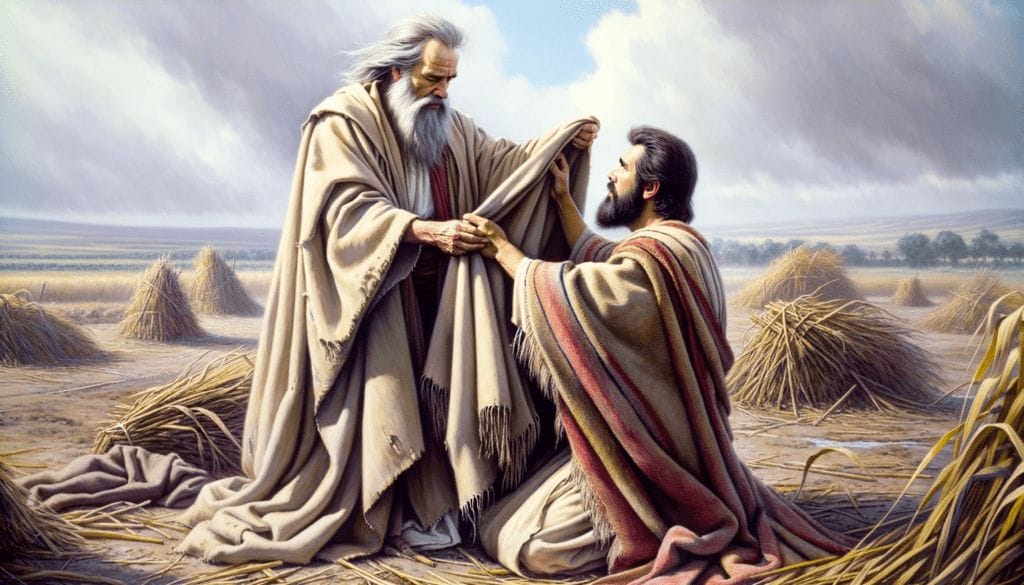The disciple making movement (DMM) is a strategy focused on creating disciples who then create more disciples, leading to rapid growth. This movement’s history shows it’s effective in spreading the gospel. Its relevance today is in building strong, repeatable faith communities. To implement DMM in your church, you need to train leaders, foster small groups, and encourage active disciple-making. While there are challenges, addressing them can help make the movement successful.
Hey there! If you’ve found your way here, chances are you’re in the noble profession of pastoring. And as someone responsible for shepherding a congregation, you might be looking for ways to reignite the passion in your church community. Enter the disciple making movement. Curious? Stick around.
A History of the Movement

The Early Church
In the aftermath of Christ’s ascension, the nascent church began to evolve in ways that no one could have anticipated.
It wasn’t just a sanctuary to seek refuge on Sabbath days; it was so much more.
Imagine the winding streets of Jerusalem, Antioch, and other ancient cities, buzzing with tales of a carpenter’s son who had changed the world.
Every alley, every market square, and every home became a potential place for discussion, teachings, and the birth of a new disciple.
This era was characterized by fervor and an infectious spirit of community.
Members weren’t just passive listeners; they were active participants, sharing their experiences, testimonies, and interpretations of Christ’s teachings.
Paul’s relationship with Timothy is a classic example of this.
It wasn’t just mentorship; it was discipleship. Paul’s words to Timothy reflect a legacy mindset.
He wasn’t merely passing on information; he was entrusting Timothy with the sacred task of ensuring the gospel’s continuity.
He understood that the message of Christ needed carriers, champions who would, in turn, raise more champions.
The relay race had begun. And Paul wanted to ensure the baton never dropped.
“You then, my son, be strong in the grace that is in Christ Jesus. And the things you have heard me say in the presence of many witnesses entrust to reliable people who will also be qualified to teach others.” 2 Timothy 2:1-2
But Paul and Timothy weren’t unique in this pursuit.
All around them, the same story was unfolding.
Think of Barnabas introducing Saul, the former persecutor, to the disciples in Jerusalem.
Recall Lydia in Philippi, whose home became a hub for believers after her conversion.
Dive into the story of Aquila and Priscilla, who took Apollos, an eloquent speaker but with limited theological understanding, under their wing.
They didn’t just correct him; they discipled him.
This was the beauty of the early church.
A vast, sprawling network of believers interconnected, each playing their part in what would become the greatest movement the world has ever seen.
This wasn’t just about numbers.
It was about quality, depth, and the insatiable desire to bring the kingdom of heaven down to earth, one disciple at a time.
If you want to know more about genuine Christian discipleship, how it’s supposed to work, and how it can be implemented in your life and church, read our article on What is Discipleship & How Jesus Implemented it.
The Discipleship Movement: Post-Early Church to Pre-Modern Era
Following the fervor of the early church, the world entered a complex era marked by socio-political upheavals, religious fragmentation, and intellectual revolutions.
The period stretching from the fall of the Western Roman Empire up to the cusp of the modern age saw drastic changes in how the church approached discipleship.
During the Middle Ages, monasticism rose to prominence.
Monasteries, led by figures like Benedict of Nursia, became the epicenters of discipleship.
Instead of the organic, community-based discipleship of the early church, there was a structured, hierarchical approach.
Join Clickmill's 100% Online Christian Internship Program!
Get Trained To Reach The Lost Online & Off Through Clickmill’s Christian Business, Digital Ministry, & Digital Marketing Discipleship Program.






Monks and nuns lived in isolated communities, dedicating their lives to prayer, study, and service.
The walls of these monasteries housed scribes who would laboriously copy scripture and theological texts, preserving knowledge and deepening their own understanding of the faith.
But while monastic life was ascetic and inward-focused, it bore its own kind of discipleship.
Novices would be mentored by older monks or nuns, learning not just theology, but also the value of work, prayer, and community living.
It was discipleship molded by routine, rigor, and reverence.
However, this era also saw the advent of the Crusades, which, paradoxically, both advanced and hindered the discipleship movement.
On one hand, the crusaders were motivated by religious zeal, viewing their military campaigns as a form of sacred duty.
But on the other, the violence and political motivations behind the Crusades often overshadowed the core teachings of Christ, causing a rift between the message and its carriers.
Then came the Renaissance, a period of awakening and rediscovery.
The printing press, introduced by Johannes Gutenberg in the 15th century, revolutionized discipleship.
Suddenly, the Bible wasn’t just a book for the clergy; it became accessible to the masses.
The written Word began its journey from the confines of the church and monastic libraries to the hands of the common people.
The Reformation further accelerated this trend.
Leaders like Martin Luther and John Calvin emphasized the priesthood of all believers.
Discipleship began to shift back towards its roots, highlighting personal relationships with God and the importance of each believer reading and understanding the Bible for themselves.
Home Bible studies, catechism classes, and lay preaching became the tools of this new wave of discipleship.
In essence, the journey from the early church to the dawn of modern times is a tapestry of peaks and valleys.
Through wars, schisms, revivals, and revolutions, the discipleship movement persisted, evolving with the changing times but always striving to echo the heartbeat of its origins in the teachings of Christ.
Disciple Making Movement: Modern Revival

Fast forward to today, we’re amid a renewed interest in the disciple making movement.
This ancient practice is regaining traction, and for good reason.
The disciple making movement is a vibrant response to the impersonal nature of today’s digital-driven society.
It’s not merely a reactionary trend, but a proactive step towards rekindling authentic discipleship connections.
Why is it resonating now? It’s simple.
The disciple making movement offers a blend of rich theological exploration with the warm, personal touch of community engagement.
It addresses the personal disconnection many experience in a tech-dominated era.
The disciple making movement creates a framework where individuals are not just passive receivers, but active participants in their faith journey.
It encourages a culture of open dialogue, shared experiences, and mutual growth.
This personal engagement isn’t just satisfying; it’s spiritually enriching.
Moreover, the disciple making movement is adaptive to modern platforms, making discipleship accessible and contemporary.
It’s a bridge between age-old spiritual wisdom and today’s digital outreach capabilities.
This revival isn’t about discarding modern advancements, but harnessing them to further the disciple making movement.
It’s a fresh iteration of an age-old mandate, tailored for today’s pastor.
The disciple making movement in a modern revival is about meeting people where they are, and guiding them towards a deeper, interactive faith journey.
The effectiveness of the disciple making movement in this modern era lies in its ability to meld the theological with the relational, the ancient with the modern, all while fostering a sense of belonging and spiritual growth within the church community.
It’s not just a movement; it’s a modern-day renaissance of authentic, community-driven discipleship.
To learn more about discipleship and the qualities to embody, check out our article on Essentials of Discipleship.
Why The Disciple Making Movement Is Relevant Today
In a digital age where everything is fast, instant and at times impersonal, people crave genuine connections.
And what’s more genuine than nurturing a disciple-making culture?
It combines the theological depth you love with the community engagement you desire.
Amidst the superficial interactions that often characterize modern interactions, the disciple making movement offers a return to authentic, transformative connections.
It’s a call back to the biblical model of discipleship, where individuals were invested in each other’s spiritual journey, nurturing growth, and transformation on a personal and communal level.
Take, for example, the relationship between Jesus and His disciples.
The New Testament is replete with instances where Jesus invests time, wisdom, and love into the lives of His disciples.
He doesn’t just teach; He forms a bond, cultivates trust, and encourages a transformative journey of faith.
His interactions with Peter, transforming him from a fisherman with impulsive tendencies to a cornerstone of the early Church, exemplify the profound impact of genuine discipleship (Matthew 4:18-20, Luke 22:31-32, John 21:15-17).
Likewise, the prophetic mentorship between Elijah and Elisha paints a vivid picture of discipleship.
When Elijah found Elisha, he was plowing the fields. With a simple gesture of placing his cloak upon Elisha, Elijah initiated a mentorship that would last until the very day he was taken up to heaven in a whirlwind.

Elisha was a devoted disciple, requesting a “double portion” of Elijah’s spirit and continuing Elijah’s prophetic ministry with a fervent spirit after Elijah’s departure (1 Kings 19:19-21; 2 Kings 2:9-15).
This relationship between Elijah and Elisha transcends mere teacher-student dynamics; it underscores a deep-seated commitment to spiritual growth and the continuation of God’s work.
Elisha’s earnest request for a double portion of Elijah’s spirit underscores a disciple’s desire for spiritual empowerment and growth, a hallmark of genuine discipleship.
Join Clickmill's 100% Online Christian Internship Program!
Get Trained To Reach The Lost Online & Off Through Clickmill’s Christian Business, Digital Ministry, & Digital Marketing Discipleship Program.






Drawing a parallel to our modern era, the disciple making movement is essentially aimed at replicating this model of intentional, empowering discipleship.
It’s about fostering a culture where seasoned believers are actively involved in nurturing the spiritual growth of newer or less mature believers.
The focus is on creating enduring, meaningful relationships that encourage inquiry, growth, and the passing on of Christian tenets and values.
In a world often characterized by fleeting interactions, the disciple making movement beckons a return to meaningful, growth-centric relationships reminiscent of Elijah and Elisha’s mentorship.
The earnestness of Elisha in seeking spiritual growth, and Elijah’s willingness to mentor him, serve as a compelling model for modern-day discipleship.
This narrative from biblical history elevates the disciple making movement’s relevance in today’s context, accentuating the transformative potential inherent in purposeful discipleship.
It underscores the significance of creating a nurturing environment where believers are empowered to grow spiritually, contribute to the broader church community, and continue the timeless tradition of making disciples who are not merely followers but active bearers and sharers of the faith.
Through the disciple making movement, the modern Church has the opportunity to revive this biblical model of discipleship, fostering a culture of mutual growth, and encouragement.
The disciple making movement is a call to revive such genuine, transformative relationships within the Church today.
It’s about moving beyond surface-level interactions to fostering a culture where individuals are invested in each other’s spiritual journey.
Each interaction is seen as an opportunity to encourage growth, challenge faith, and spur one another towards love and good deeds, as urged in Hebrews 10:24-25.
Furthermore, the disciple making movement is about embodying the teachings of Christ in our daily interactions.
It’s about living out the Great Commission in Matthew 28:18-20, not just as a pastoral duty, but as a communal responsibility.
Every believer is seen as both a disciple and a disciple-maker, echoing the early Church’s ethos where discipleship was a communal endeavor, not a solitary pursuit.
The disciple making movement is a breath of fresh air.
It provides a deeper understanding of God’s word, a stronger sense of community, and a more vibrant, growth-centric church culture.
Benefits of Disciple Making Movement

Personal Spiritual Growth
Imagine a Sunday morning, beyond the sermon, you engage with members, delving into scriptures, discussing personal challenges, and rejoicing in spiritual victories.
Now, envision this practice echoing through your congregation, where members earnestly engage with one another, fostering personal connections rooted in Christ’s teachings.
Through this intentional engagement, toxic communications are discouraged as a culture of love, understanding, and active listening is cultivated.
Being a disciple isn’t a stagnant state but a continuous journey.
There’s always room for growth, for both in the discipleship relationship.
In encouraging your church community to engage in disciple making, you’re promoting a culture of perpetual spiritual growth.
As individuals deepen their understanding, they become more rooted in their faith, evolving into more mature believers capable of nurturing others in their spiritual journey.
This nurturing environment also serves as a fertile ground for honing communication skills, as individuals learn to express their faith, listen actively, and respond to each other’s needs with empathy and understanding.
The disciple making movement not only enriches the spiritual life of the individual but significantly enhances the quality of interactions within your church community.
The emphasis on love, active listening, and addressing each other’s needs cultivates a healthy communication environment, thereby contributing to the overall health and growth of your church community.
Growing Your Church Community
The disciple making movement isn’t just for personal growth.
It’s a ripple effect.
As each person grows, they bring others into the fold, creating a vibrant, ever-expanding community.
Encouraging your congregation not just to seek discipleship, but to offer it, creates a vibrant, self-sustaining community.
As disciples multiply, the communal bond strengthens.
This isn’t just about a Sunday service; it’s about creating a network of believers actively engaged in each other’s spiritual journey throughout the week.
Moreover, as the community expands in maturity, it becomes a beacon of God’s love, drawing more individuals into its fold.
The disciple making movement thus becomes a catalyst for growing a thriving, spiritually robust community.
Each member, irrespective of their spiritual maturity, is both a disciple and a disciple-maker, contributing to the continuous growth and vibrancy of the church community.
The disciple making movement is a vehicle for not just personal spiritual growth, but for cultivating a thriving, interconnected community committed to walking together in their spiritual journey, echoing the biblical ethos of mutual growth and discipleship.
Discipleship is about mature Christians preparing to reach the lost in different sectors such as business & ministry startups, digital ministry, & entrepreneurship – if this sounds like you then discover more about our Discipleship Training School.
Join Clickmill's 100% Online Christian Internship Program!
Get Trained To Reach The Lost Online & Off Through Clickmill’s Christian Business, Digital Ministry, & Digital Marketing Discipleship Program.






Steps to Implement in Your Church
Understanding the Basics: Embarking on the disciple making movement begins with a solid understanding. Delve into the scriptures to grasp how Christ nurtured His disciples. Reflect on His journey with the 12 disciples, transforming them from ordinary men into apostles who significantly impacted the world. This foundational step sets the stage for implementing a disciple-making culture in your church.
Engage and Educate Your Leadership: Before cascading the disciple making movement to the congregation, ensure your leadership team is aligned and educated on its principles. Engage them in discussions, workshops, and biblical studies that emphasize the importance and methods of discipleship. Ensure they are aligned with the vision.
Create a Discipleship Plan: Develop a clear, actionable discipleship plan. Define the goals, methods, and engage with your congregation to know what it is they are looking for in a discipleship program. This plan will serve as a roadmap for your church as you venture into creating a disciple-making culture.
Promote a Culture of Openness and Growth: Encourage an environment where questions are welcomed, and spiritual growth is celebrated. Foster a culture that values every individual’s journey, promoting a sense of community and mutual growth.
Regular Review and Adaptation: Evaluate the progress of your discipleship plan regularly. Be open to feedback and ready to adapt your strategies to ensure the disciple making movement remains effective and relevant in your church community.
Disciple Making Movement: Tackling Challenges

Engaging the Youth
Engaging the youth can indeed be a tricky task, but it’s crucial as they are the future torchbearers of the church.
It’s essential to speak their language by using relatable content, sharing compelling testimonies, and providing opportunities for responsibility.
Assigning them roles that carry responsibility within the church, addressing modern-day challenges, and providing a platform for young members to share their experiences can significantly enhance engagement.
Moreover, establishing youth mentorship programs where older members disciple the younger ones can foster a robust disciple making culture that resonates with the youth.
Budgeting and Cost-Effective Marketing
Financial constraints are a common challenge, but with a bit of strategic partnerships, effective marketing is achievable.
Instead of solely relying on costly marketing avenues, harness the organic outreach potential inherent within your congregation.
Encourage members to share their discipleship experiences, testimonies, and church events within their circles, both offline and online.
This word-of-mouth promotion, stemming from genuine personal experiences, can have a profound impact and extend your reach without overstraining the budget.
Consider forming partnerships with like-minded, marketing firms that resonate with your vision of disciple making.
They often possess a nuanced understanding of faith-based community engagement and can offer tailored, budget-friendly marketing solutions.
Furthermore, explore collaborative events or discipleship workshops with neighboring churches or faith-based organizations.
Joint events can not only share costs but also broaden the community engagement, creating a larger platform to promote the disciple making movement.
Choosing the Right Marketing Strategy
Understanding the unique needs and preferences of your congregation is the cornerstone of selecting the right marketing strategy.
Dedicate time to extensive research, analyze your congregation’s demographics, and seek feedback to comprehend their needs better.
It’s also beneficial to keep an open line of communication with your congregation to ensure that the marketing strategies employed resonate well and are in alignment with the church’s mission and vision.
By adopting a well-informed, tailored marketing strategy, you’ll be better positioned to promote the disciple making movement effectively within your community and beyond.
When exploring marketing companies who offer these very services, consider client testimonials and case studies to gauge the effectiveness and relevance of their solutions.
Engaging a Christian marketing firm can significantly foster growth across various facets of your ministry.
At Clickmill we do exactly that, explore our range of services designed to amplify growth within your church.
The disciple making movement combines age-old wisdom with modern strategy.
For pastors like you, it offers a fulfilling path to grow both personally and as a church leader.
Dive in, embrace the challenge, and witness the transformation!
Disciple Making Movement: FAQ’s
What exactly is the disciple making movement?
It’s a movement where disciples actively make other disciples, focusing on genuine spiritual growth and community engagement.
Why is it relevant in today’s digital age?
In our fast-paced digital era, people crave genuine connections and spiritual depth. The movement offers both.
How can I integrate it into my current church setting?
Start with understanding, then employ modern platforms to make it accessible. Engage the youth and ensure cost-effective marketing.
Can it help grow my church community?
Absolutely! It’s about quality and depth. As each member grows, they bring others into the fold, expanding your community.
Are there any modern tools to help with the movement?
Yes, from social media platforms to tailored church marketing services, many tools can assist in your disciple-making journey.

Responses